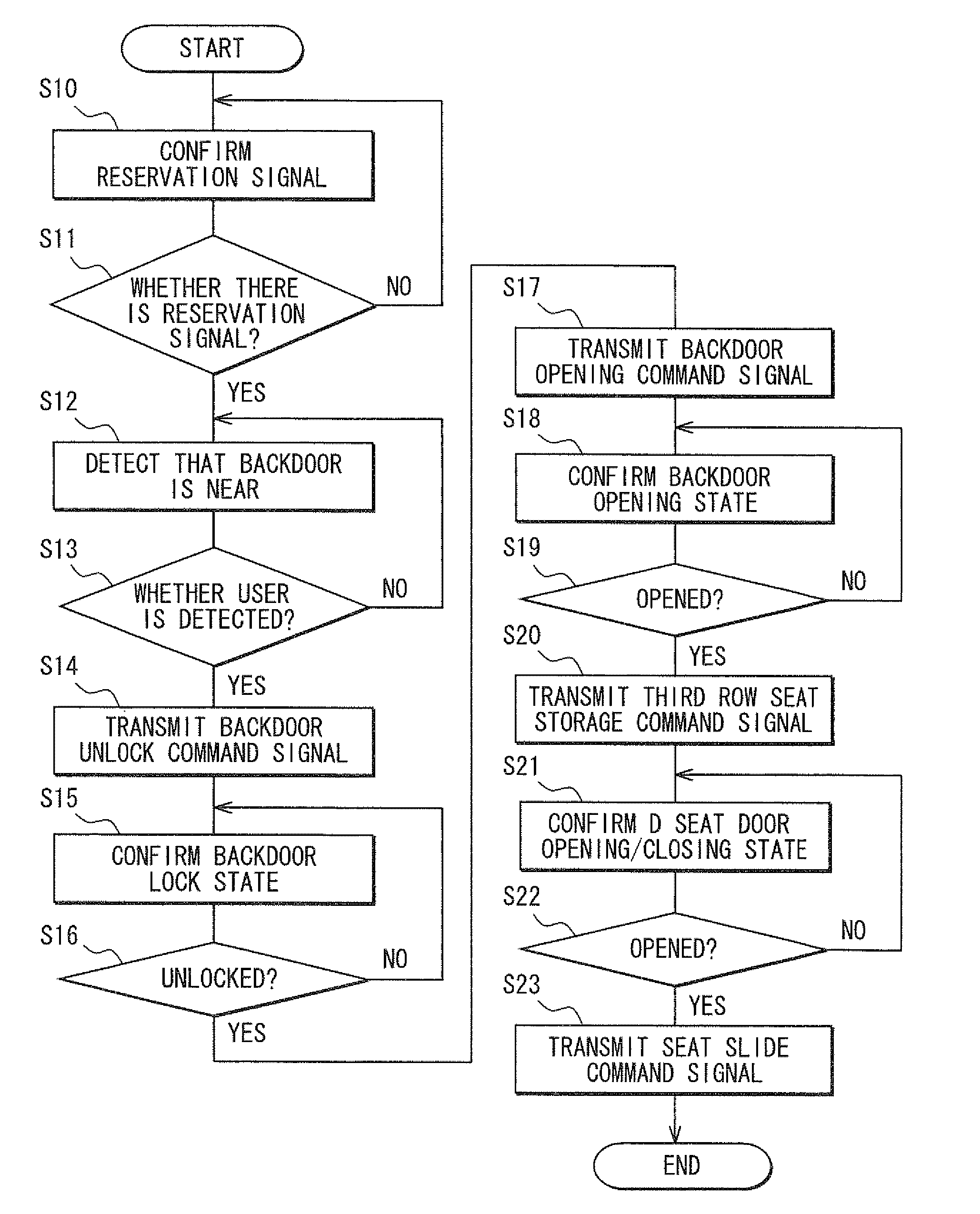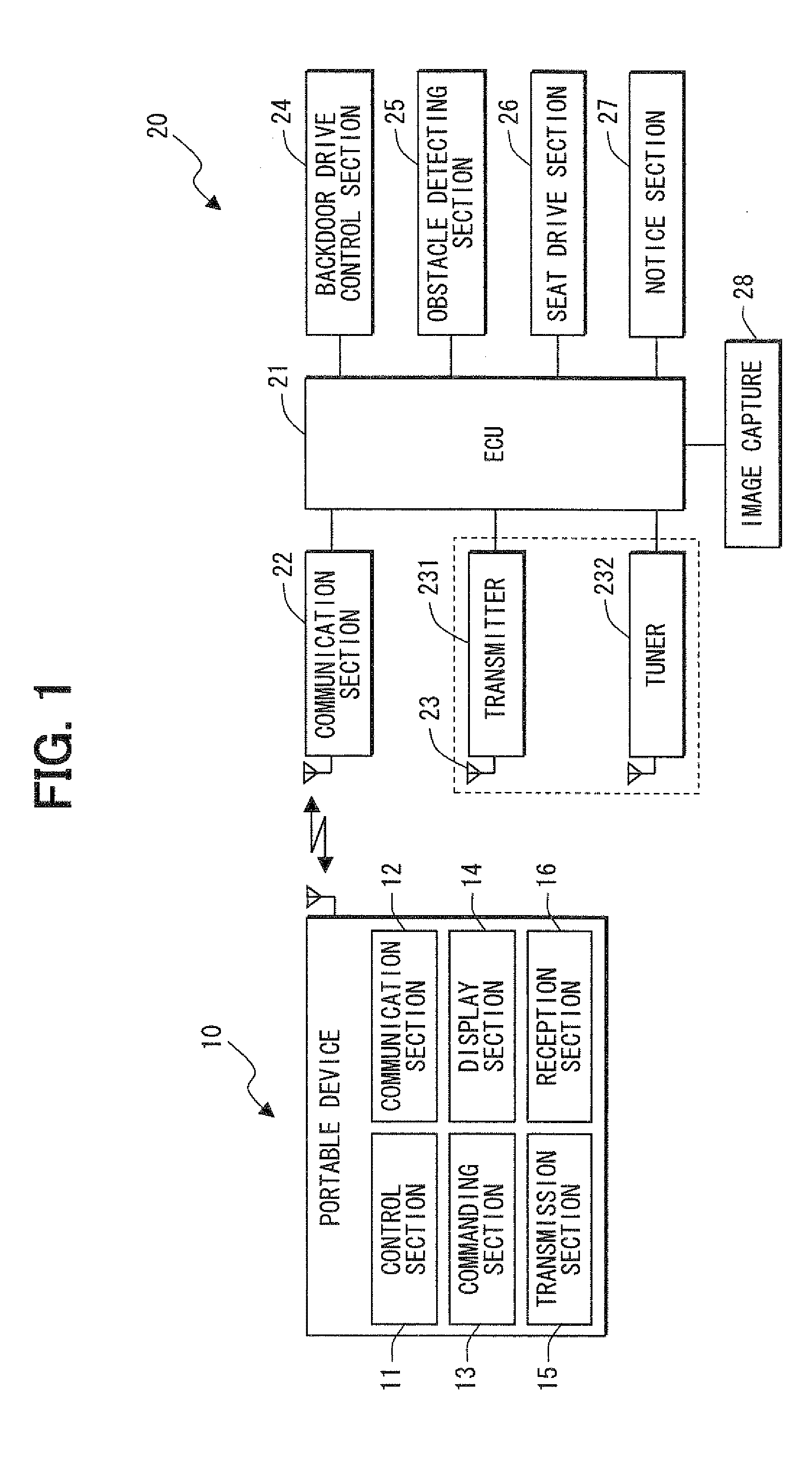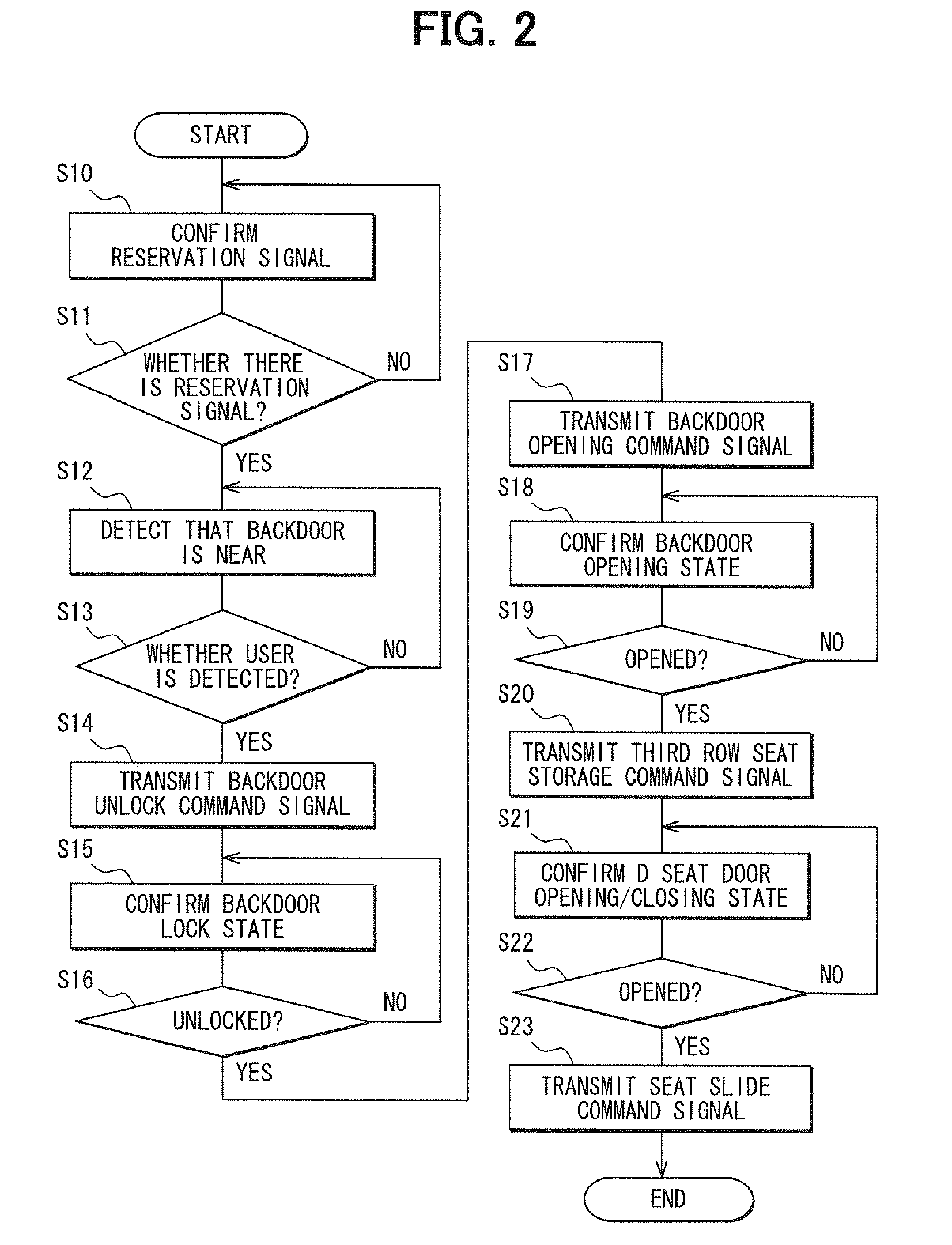Vehicle door controller
- Summary
- Abstract
- Description
- Claims
- Application Information
AI Technical Summary
Benefits of technology
Problems solved by technology
Method used
Image
Examples
Embodiment Construction
[0030]Hereinafter, a vehicle door controller in accordance with an exemplary embodiment will be explained with reference to the drawings.
[0031]As shown in FIG. 1, the vehicle door controller of the present embodiment is provided with a portable device 10 that can carry out wireless communication and a vehicle-side controller 20. The portable device 10 is used as a key and further acts as a command device for a vehicle. More specifically the portable device 10 is a smart key in a system such as a so-called smart entry system, passive entry system, intelligent key system, and the like, that performs a given control such as for example, lock / unlock control of the vehicle door, based upon the checking result of the ID code by interactive mutual communication with the vehicle-side controller 20, including a transmitter 231 and a tuner 232, mounted in the vehicle.
[0032]The portable device 10 can include a control section 11 that includes a central processing unit (CPU), a memory, and the ...
PUM
 Login to View More
Login to View More Abstract
Description
Claims
Application Information
 Login to View More
Login to View More - R&D
- Intellectual Property
- Life Sciences
- Materials
- Tech Scout
- Unparalleled Data Quality
- Higher Quality Content
- 60% Fewer Hallucinations
Browse by: Latest US Patents, China's latest patents, Technical Efficacy Thesaurus, Application Domain, Technology Topic, Popular Technical Reports.
© 2025 PatSnap. All rights reserved.Legal|Privacy policy|Modern Slavery Act Transparency Statement|Sitemap|About US| Contact US: help@patsnap.com



